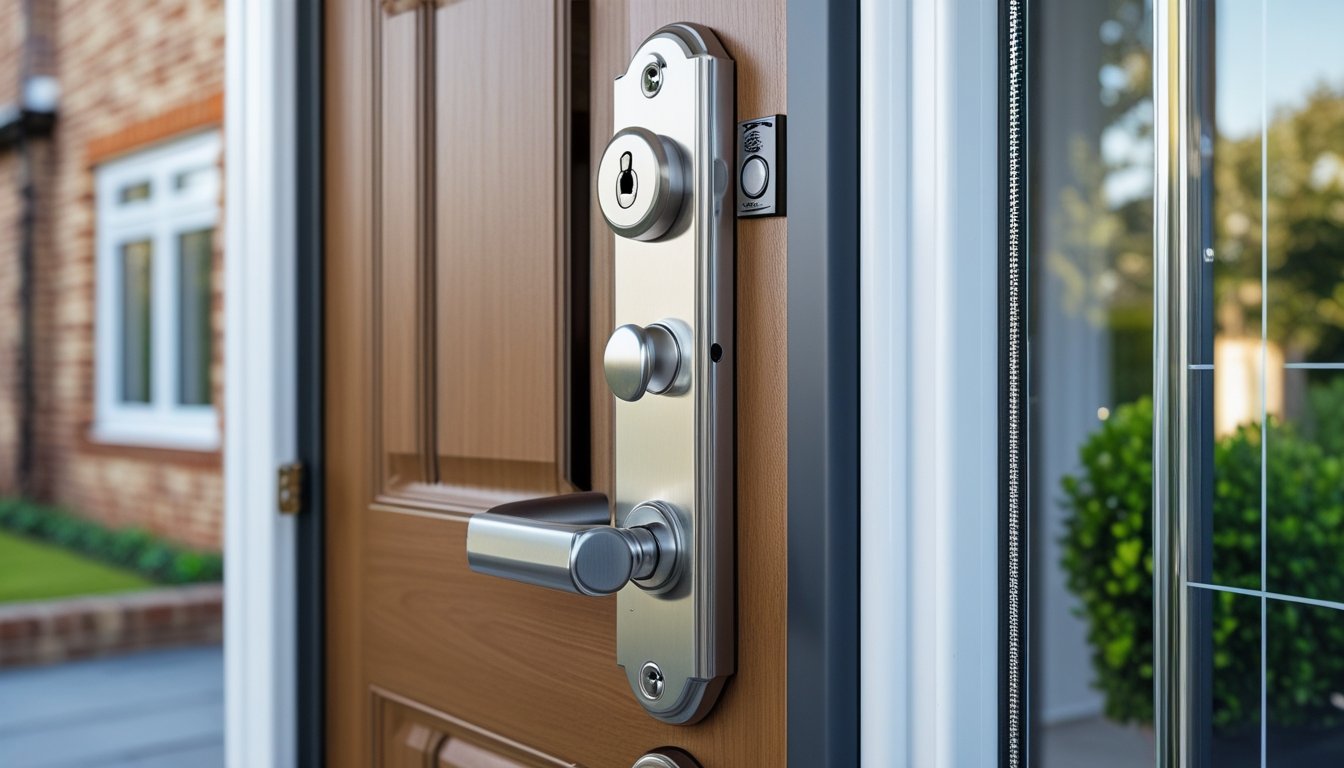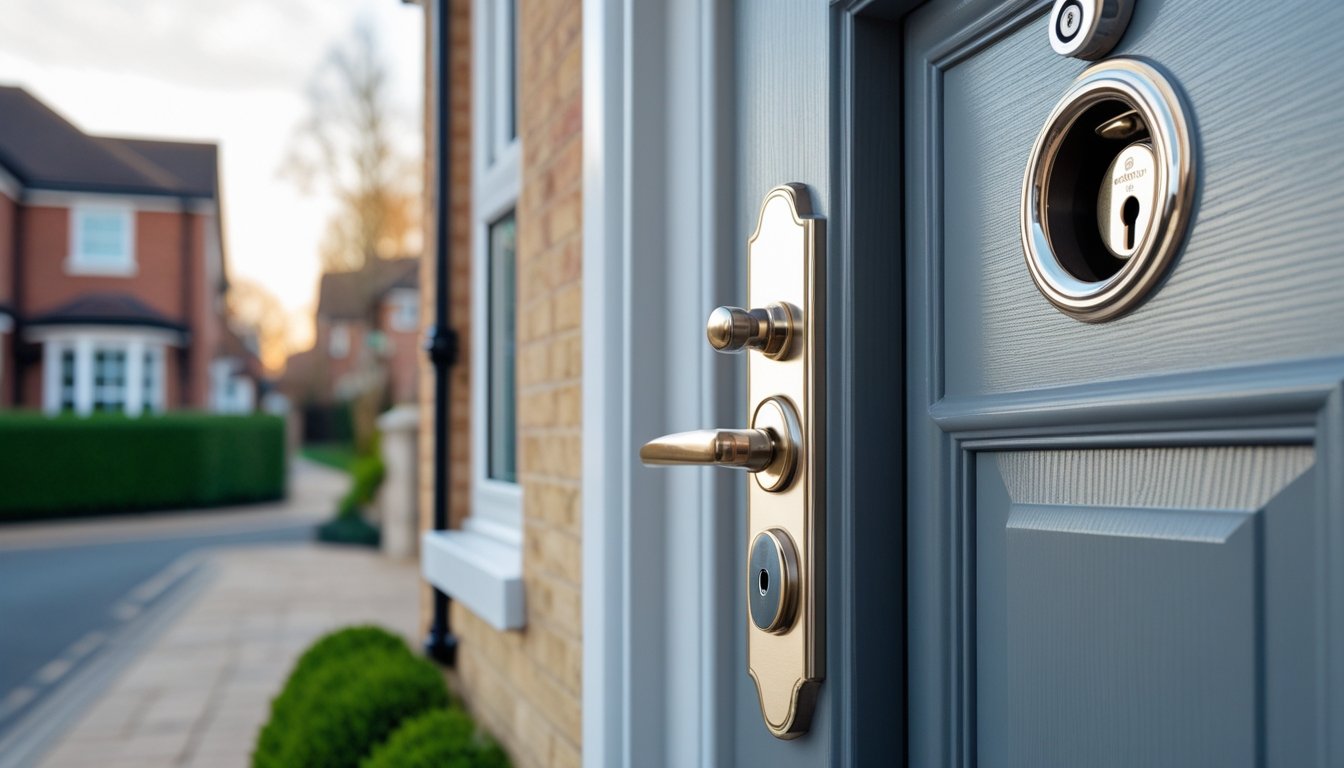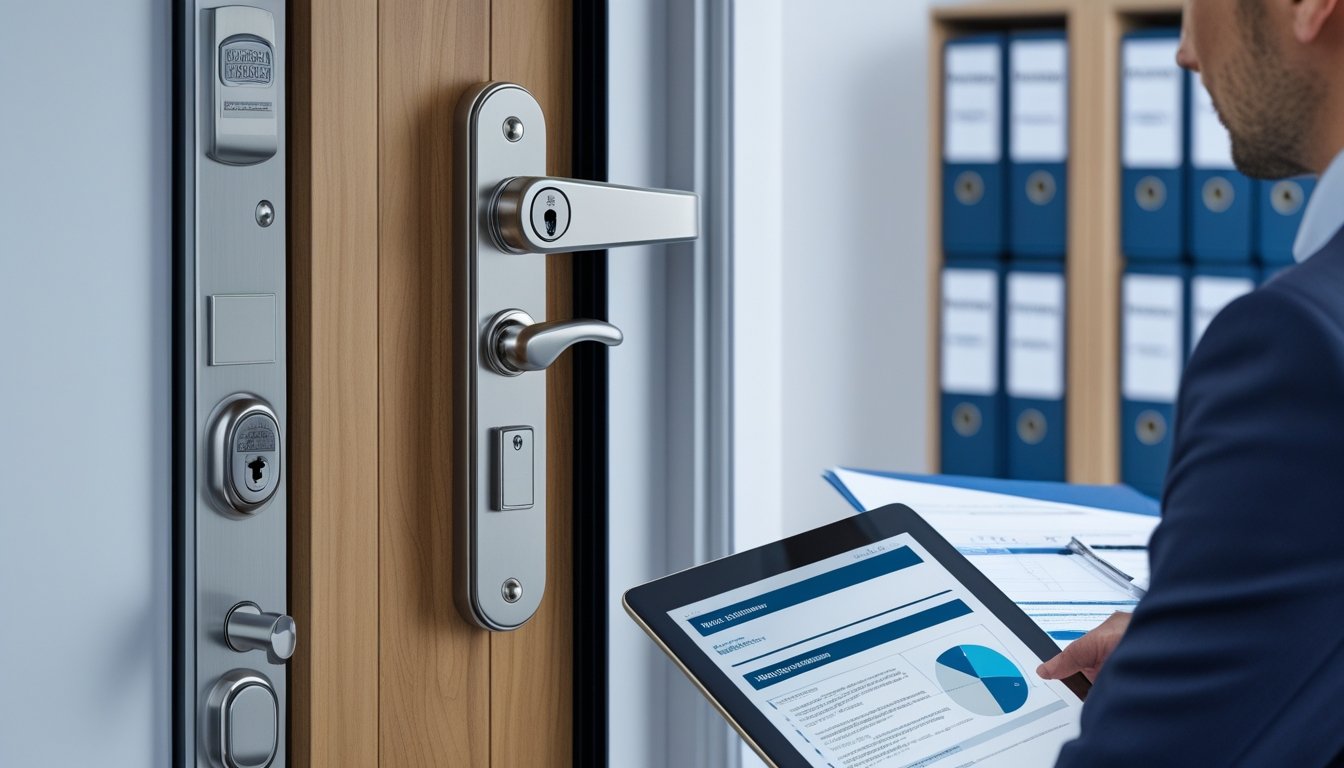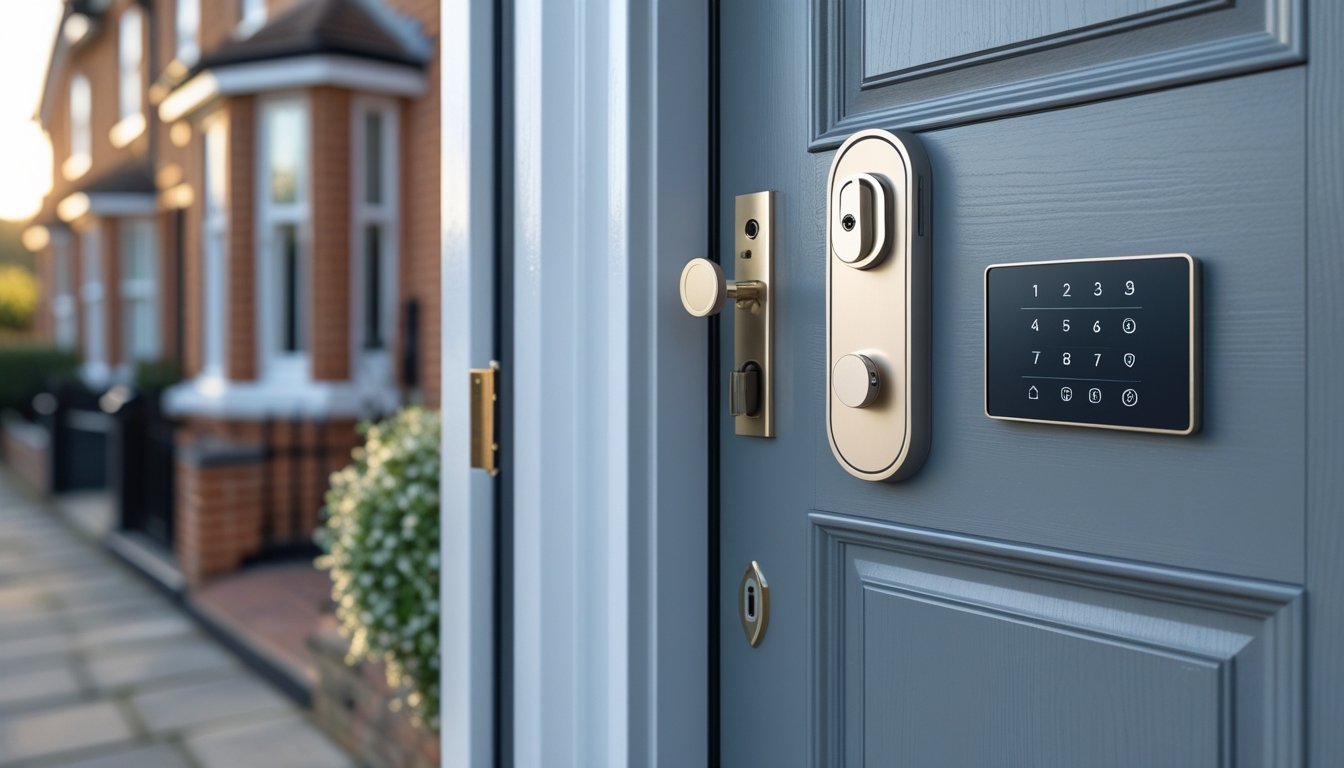Late updated: 05 Aug 2025 13:08
Written by: Elena Prescott
Understanding Door Security Standards in the UK: A Comprehensive Guide
Doors serve as the frontline guardians of our properties, but choosing the right level of security can be bewildering. In the UK, there are specific standards that dictate the resilience and security features of these vital entry points. PAS24 and BS3621 are widely recognised in the UK as essential standards that doors and locks should meet to ensure maximum security. By focusing on these standards, we can better protect our homes and businesses from potential threats.

These standards aren't just technical jargon—they're practical guidelines. PAS24 ensures doors and windows resist physical attacks with robust construction, while BS3621 calls for locks that resist picking, drilling, and other common burglary techniques. With these in mind, we can make informed choices that align with both security needs and compliance requirements.
Our exploration of UK door security standards will equip you with the insights needed to enhance security efficiently. This knowledge not only assists in safeguarding people and valuables but also ensures peace of mind.
Key Takeaways
- Understand key UK door security standards like PAS24 and BS3621.
- Focus on design and regulation compliance for optimal security.
- Get answers to common questions about protecting your property.
Key Door Security Standards in the UK

In the UK, door security standards are designed to ensure that locks and exit devices meet specific safety and security requirements. These standards cover diverse aspects, including mechanical locks, dual mode operations, cylinder regulations, and panic hardware.
BS EN 12209: Mechanical Lock and Latch Regulations
BS EN 12209 outlines the requirements for the mechanical performance of locks and latches. It is crucial for ensuring safety and reliability in both residential and commercial doors. This standard specifies various performance levels, depending on the lock's application and usage environment.
The standard evaluates a lock’s durability, strength, and functionality to resist physical attacks. Fire resistance testing is a critical aspect, ensuring that these locks perform adequately under fire conditions, which is essential for applications like fire doors. The comprehensive criteria allow manufacturers and users to assess and compare products for optimal security.
BS 10621: Dual Mode Lock Standards
BS 10621 sets guidelines for dual mode locks that offer both automatic and manual locking modes. These locks are often used for additional security or convenience in specific scenarios, such as shared entrances. The flexibility of switching between modes is valuable for safeguarding access without compromising ease of use.
This standard ensures manufacturers provide locks with reliable operational modes that can withstand tampering attempts. Products must demonstrate endurance and functionality over extensive cycles, meaning users can trust these locks for consistent security. Detailed testing protocols also assure compatibility with fire safety regulations.
BS EN 1303: Cylinder Lock Requirements
BS EN 1303 details the standards for cylinder locks, focusing on their resistance to several forms of attack and their operational reliability. These locks are a common choice for exterior doors, providing additional security features like anti-pick and anti-bump protection.
We evaluate cylinder locks according to multiple criteria, including key identification, durability, and strength against forced entry. The standard requires testing for high-temperature resistance, often relevant in fire door applications. By adhering to BS EN 1303, users ensure robust security features that maintain performance in challenging conditions.
BS EN 1125: Emergency Exit and Panic Device Standards
BS EN 1125 covers the requirements for panic exit hardware designed for emergency situations. These devices allow for quick and unobstructed exit, essential in public places and fire safety scenarios. They must offer easy operation without prior knowledge, making them suitable for anyone needing rapid egress in an emergency.
The standard mandates rigorous testing for reliability and safety, aligned with fire door functionality. We assess these devices based on ease of use under stress conditions and their resilience to tampering. Adherence to BS EN 1125 ensures both compliance with safety regulations and enhanced protection for all occupants.
Essential Security Criteria: Design, Regulations, and Compliance

In ensuring the security of doors in the UK, it is essential to consider building regulations, design standards, and compliance measures. We explore various elements of security such as structural strength, fire safety, and accessibility requirements.
Building Regulations for Doors: Security and Fire Safety
UK building regulations contain crucial requirements for door security and fire safety. Part Q, for example, outlines security standards aimed at resisting potential attacks.
These standards are particularly vital for new dwellings and refurbishments.
Additionally, Part B sets out fire safety requirements, ensuring that fire doors meet resistance criteria. Compliance with these regulations not only enhances security but also ensures that doors contribute to the overall safety of a building.
PAS 24 is often referenced as a minimum security standard.
Door Frame Strength and Gap Tolerances
The strength of door frames plays a critical role in overall security. Doors must be robust enough to withstand forced entry attempts, and the tolerances around gaps are essential in determining their security effectiveness.
Frames manufactured to meet British Standards are optimal.
PAS 24 standards provide guidelines for manufacturing specifications. Ensuring that door frames and their fittings meet these criteria helps prevent unauthorised access. Proper installation is also essential, reducing vulnerabilities at entry points.
Fire Door Installation and Certification
Proper installation and certification of fire doors are mandatory under UK building regulations to ensure both occupant safety and regulatory compliance.
Fire doors must undergo rigorous testing for integrity and insulation. Certification bodies, like CERTIFIRE, play a key role in verifying that fire doors meet required standards.
These doors are vital in preventing the spread of fire and smoke, protecting escape routes, and buying critical time for evacuation. It is essential to follow guidelines for correct placement and fitting of fire doors.
Accessibility and Compliance Requirements for Security Doors
Accessibility is another vital factor in door security standards. Part M of the building regulations requires doors to meet specific dimensional and operational standards to accommodate individuals with disabilities.
Ensuring that doors are equipped with necessary features, such as clear opening widths and appropriate hardware, is crucial. These measures not only foster inclusivity but integrate security without compromising accessibility.
Compliance with these requirements promotes safety, ensuring doors are functional for all users while maintaining security.
Frequently Asked Questions

In the context of door security standards in the UK, several guidelines and classifications ensure safety and compliance. We'll address some common questions regarding these standards and how they impact security decisions.
What are the British Standards for door locks and hardware?
The British Standards for door locks, such as BS 3621, ensure that locks meet certain security requirements. These standards test locks on elements like mechanical strength and durability against forced entry. Following these standards helps protect properties effectively.
How does CE marking apply to door security products in the UK?
CE marking indicates compliance with European Union safety standards. For door security products, this means the product has met key safety and performance requirements. Although Brexit has influenced regulations, CE marking remains an important consideration for ensuring product quality.
What is the significance of the PAS 24 standard for doors?
PAS 24 is a test to assess the security performance of doors and windows against potential intruders. Products that achieve this standard demonstrate enhanced security for homeowners. It's crucial for those developing new properties to consider this certification to meet building regulations.
Can you explain the differences between Grade 6 and Grade 7 door security classifications?
Grade 6 and Grade 7 classifications refer to the strength and security level of door locks. Grade 7 offers higher resistance and strength compared to Grade 6 and is often recommended for areas needing elevated security measures. Choosing the appropriate grade depends on specific security needs.
What are the requirements for fire-rated door security systems?
Fire-rated doors must withstand fire for a specific period, typically ranging from 30 to 120 minutes. In addition to resisting fire, these doors must also meet security standards, ensuring safe egress and preventing unauthorised access during emergencies. Maintenance and regular testing are vital for compliance.
How do I determine the appropriate security level for exterior doors in residential buildings?
The security level for exterior doors should consider several factors, including location, local crime statistics, and door usage. High-security locks and PAS 24-certified doors are advisable for better protection. Consulting with security professionals can provide further guidance tailored to specific property needs.
